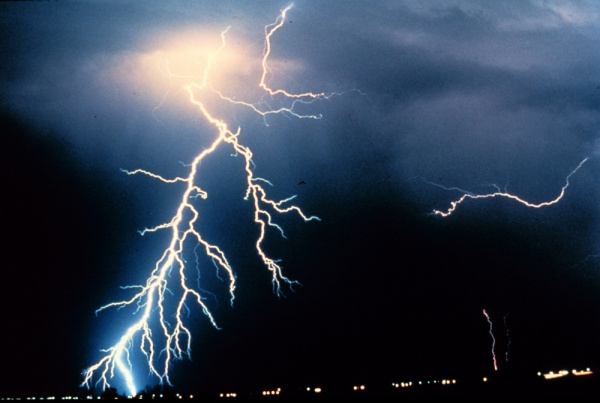Electricity is all around us–powering technology like our cell phones, computers, lights, soldering irons, and air conditioners. It’s tough to escape it in our modern world. Even when you try to escape electricity, it’s still at work throughout nature, from the lightning in a thunderstorm to the synapses inside our body. But what exactly is electricity? This is a very complicated question, and as you dig deeper and ask more questions, there really is not a definitive answer, only abstract representations of how electricity interacts with our surroundings.

DOWNLOAD MOBILE APPLICATION TO LEARN MORE: Electricity
Electricity is a natural phenomenon that occurs throughout nature and takes many different forms. In this tutorial we’ll focus on current electricity: the stuff that powers our electronic gadgets. Our goal is to understand how electricity flows from a power source through wires, lighting up LEDs, spinning motors, and powering our communication devices.
Electricity is briefly defined as the flow of electric charge, but there’s so much behind that simple statement. Where do the charges come from? How do we move them? Where do they move to? How does an electric charge cause mechanical motion or make things light up? So many questions! To begin to explain what electricity is we need to zoom way in, beyond the matter and molecules, to the atoms that make up everything we interact with in life.
Table of Contents
IMPORTANT MCQs for electricity
1. A wire of length 1, made of material resistivity p is cut into two equal parts. The resistivity of the two parts are equal to,
(a) p
(b) P/2
(c) 2 p
(d) 4 p
2. The temperature of a conductor is increased. The graph best showing the variation of its resistance is

3. A boy records that 4000 joule of work is required to transfer 10 coulomb of charge between two points of a resistor of 50 Ω. The current passing through it is
(a) 2 A
(b) 4 A
(c) 8 A
(d) 16 A
4. A fuse wire repeatedly gets burnt when used with a good heater. It is advised to use a fuse wire of
(a) more length
(b) less radius
(c) less length
(d) more radius
5. A cell, a resistor, a key and an ammeter are arranged as shown in the circuit diagrams. The current recorded in the ammeter will be
(a) maximum in (i)
(b) maximum in (ii)
(c) maximum in (iii)
(d) same in all the cases
6. To get 2 Ω resistance using only 6 Ω resistors, the number of them required is
(a) 2
(b) 3
(c) 4
(d) 6
7. Two devices are connected between two points say A and B in parallel. The physical quantity that will remain the same between the two points is
(a) current
(b) voltage
(c) resistance of
(d) None of these
8. If P and V are the power and potential of device, 19. TE the power consumed with a supply potential

9. A coil in the heater consume power P on passing current. If it is cut into halves and joined in parallel, it will consume power

10. What is the maximum resistance which can be made using five resistors each of 1/5 W?
(a) 1/5 Ω
(b) 10 Ω
(c) 5 Ω
(d) 1 Ω
11. A cylindrical conductor of length / and uniform area of cross-section A has resistance R. Another conductor of length 27 and resistance R of the same material has area of cross-section
(a) A/2
(b) 3A/2
(c) 2A
(d) 3A
Answer key
1. (a)
2. (a)
3. (c)
4. (d)
5. (d)
6. (b)
7. (b)
8. (c)
9. (d)
10. (d)
11. (c)
DOWNLOAD MOBILE APPLICATION TO LEARN MORE: Electricity
ALSO VISIT:
+1 PHYSICS
| Also study: | Also study: | Also study: | Also study: | Attempt the quiz on: |
| Important Questions on Oscillations | Mechanical Properties of Fluids | System of Particles and Rotational Motion | Important Questions on Kinetic Theory | |
| Kinetic Theory | Objective Questions on Waves | Questions on Thermodynamics | ||
| Thermal Properties of Matter | ||||

